But dammit, I don't sell tanks, so in the interest of keeping the wolf at least on the curb by the mailbox, more knife info.
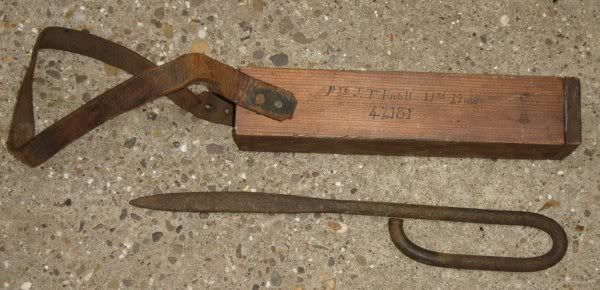
Field expediency. I love the term. I love the idea. "Use it up, wear it out, make it do or do without" (a quote I've most often heard from people who do without nothing. But a valid concept nonetheless). "Pieces of string too short to save". That kind of thing.
So, in that vein we embark on yet another of my random prattlings about the equipment used in the debacle mentioned above.
Baffling though it is, in both world wars the thought never occurred to anyone in the "Big Brain Military Procurement" fields that the lads on the ground might want a knife. In the second war the response took the form of the "Theater Knife" a particularly charming chunk of folk art. That is if you could ever get any "folklorists" (English majors) to think about weapons. But, and this as a former folklore geek, I talked about them before (and will again) here and here.
The first war surprised everyone. The grand schemes, the Schielffen Plan, France's Plan XVII, all worked on the assumption that this conflict would be a war of movement. The infantry would break the line and then the glorious cavalry would exploit the breach to wreak havoc in the bad guy's rear - and then we'd all go home for Christmas.
Not so. Machine guns, rapid-fire artillery and barbed wire made stalemate the result leaving nothing to do but pointless massed infantry charges against entrenched machine guns. That is, on the occasions and there were many ("Lions led by donkeys" as Bismarck - I think - said)) that the powers-that-be thought that this time it just might work.
In the meantime, the only consistent offensive actions any of the armies involved could take were trench raids and/or nighttime patrols of no man's land. In both of these situations silence was more important than firepower. Something about noise and muzzle flash while still in full view of those same machine guns that cut your regiment to pieces during the last "big push".
So, it came down to clubs and knives. Primitive weapons, reverting right back to the middle ages. I'll deal with trench clubs at another time. Now the "French Nail" gets center stage.
First off...it's a misnomer. Everyone made knives on the line. Either from files, shortened bayonets or barbed wire pickets. The one that carries the title, that is the one pictured above - with the simple loop handle (low-tech knuckleduster) and the wooden box sheath, was a Brit contribution. They were cranked out by the thousands by the Royal Engineers Workshops in the hope of keeping the lads "...in there battin'".
Of the others pictured below, the classier ones are all French. They seemed to like to personalize them, etching sentiments such as Le Venguer de 1870 (a reference to the earlier Franco/Prussian war) or Le Nettoyeur de Tranchees ("The Trench Cleaner"). I make a version of one of these and, since this entire post is about drumming up business, you can see it here. It's one of my favorites simply because it has absolutely nothing extraneous about it. Just welded steel and part of the handle serves as a belt loop.
Closing now with some pictures of the real deal.
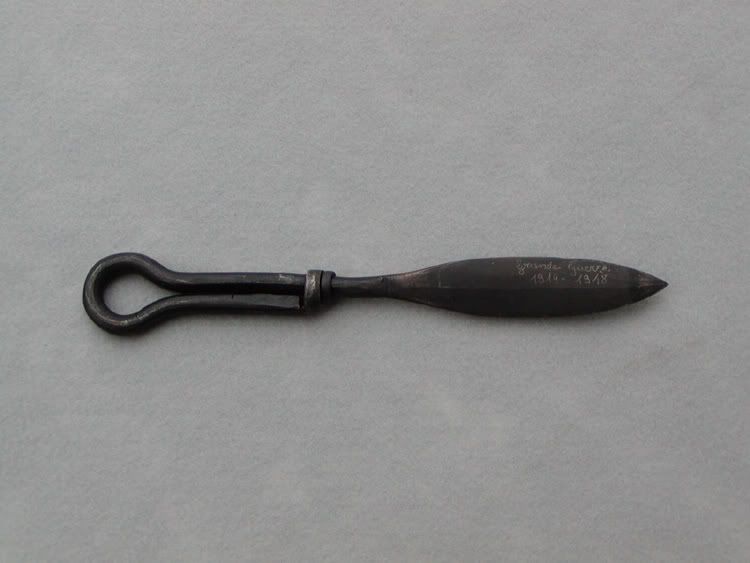
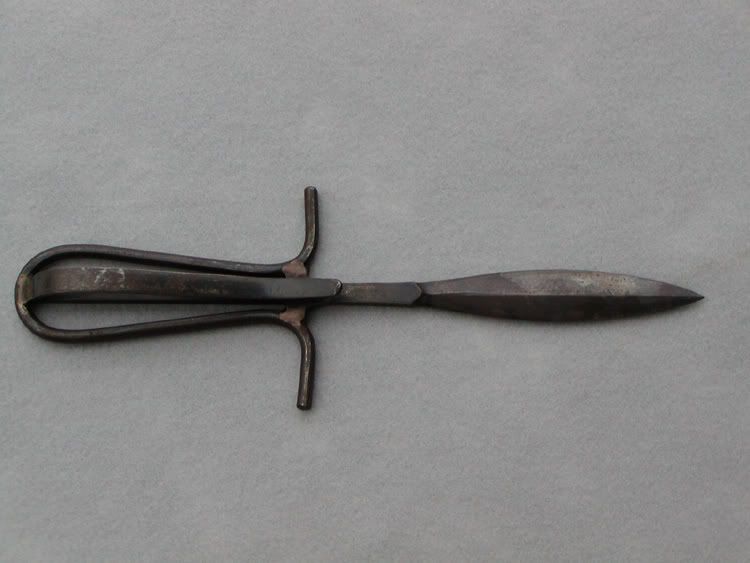
The one to the left is engraved Grande Guere 1914-1918. Obviously added postwar so that Grandpa Pierre, as his memories slowly faded, wouldn't use it as a tent peg.
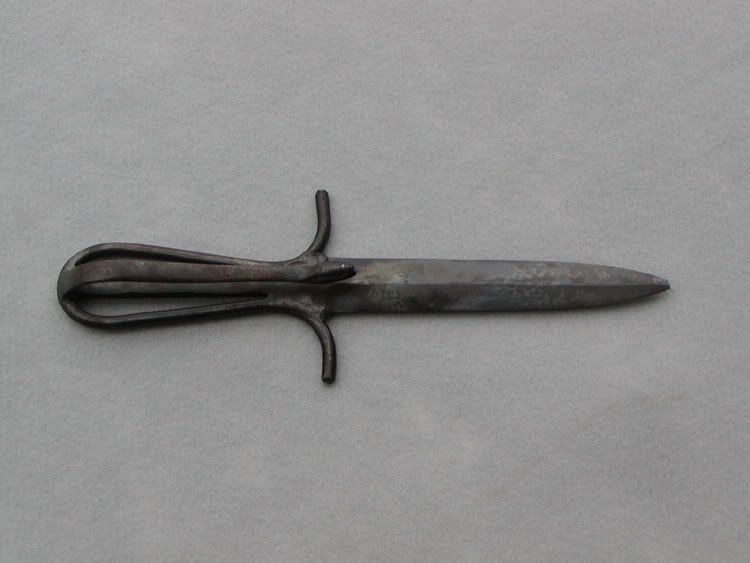 This one is nice. The belt loop end is shaped into a snake's head.
This one is nice. The belt loop end is shaped into a snake's head. Here we have one of the original "Trench Cleaners" also with a date. This guy apparently got out of the shit in 1917.
Here we have one of the original "Trench Cleaners" also with a date. This guy apparently got out of the shit in 1917.Closing now with a picture of the project that rekindled my interest in these things. A set of three, ordered by New Jersey Stu, my most enthusiastic and appreciative customer. Thanks again, Stuart.
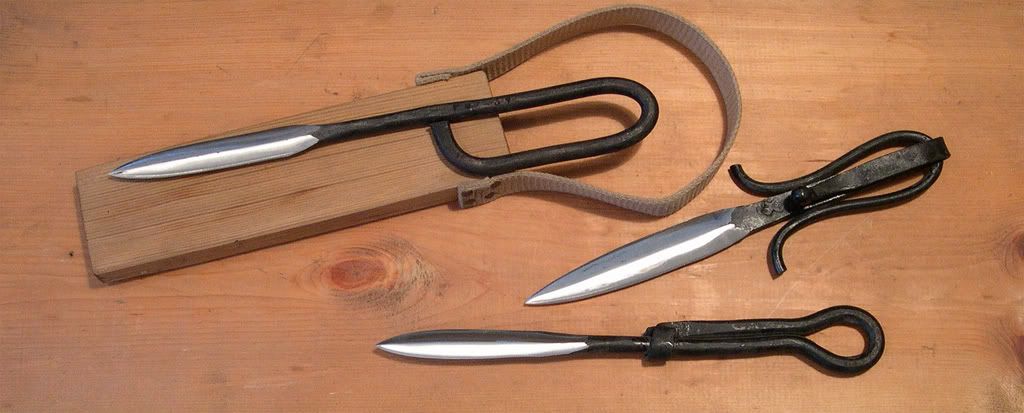










6 comments:
Waiting for the trench clubs bit, it should be good, as usual!
Good info about the French nail. What kind of stuff would you recomend to use to make improvised knives?
You write like a total asshole.
yeezy boost
supreme t shirt
jordan 6
off white hoodie
kobe basketball shoes
supreme new york
nike basketball shoes
coach outlet store online
nike max
supreme hoodie
weblinkuse this link my review hereWebsite this websiteYour Domain Name
siiliaiao820
golden goose outlet
golden goose outlet
golden goose outlet
golden goose outlet
golden goose outlet
golden goose outlet
golden goose outlet
golden goose outlet
golden goose outlet
golden goose outlet
Post a Comment